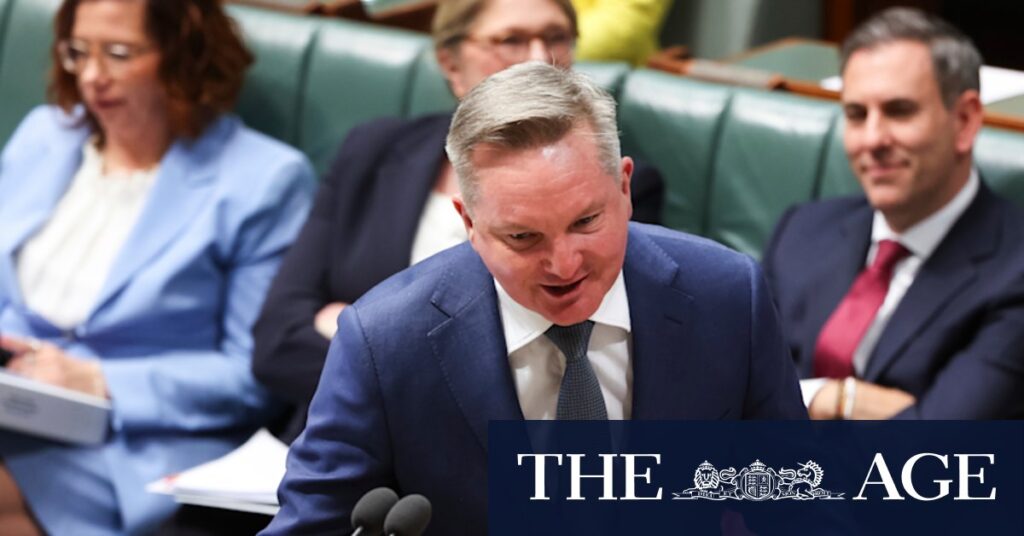
Australia’s largest businesses are urging for bipartisan support on climate policy as the government prepares to unveil its latest emissions reduction target. Aiming too high, they warn, could cost the nation up to half a trillion dollars over the next decade. The Business Council of Australia, representing over 100 top firms, has released a report by McKinsey & Company highlighting potential economic impacts if Labor pursues a 70% emissions reduction by 2035.
The report suggests that such ambitious targets could slash gas and coal exports by $150 billion annually. It also outlines significant changes required in consumer behavior and industry practices, including increased adoption of electric vehicles and sustainable aviation fuels. Additionally, nearly 60,000 new workers would be needed by 2030 to support these projects, marking a fourfold increase from 2022 levels.
Government’s Climate Strategy in Focus
The government’s climate adviser is anticipated to recommend a reduction range of 65% to 70% by 2035. Climate Change and Energy Minister Chris Bowen is expected to align with this range when announcing updated targets this month. Details on how sectors like agriculture, mining, and households will need to adapt are also forthcoming.
Meanwhile, the Coalition faces internal strife over energy policy, particularly regarding the 2050 net zero pledge and potential new gas reservation policies. McKinsey consultants recently briefed Coalition members in parliament, emphasizing the complexities of transitioning to renewable energy.
Business and Political Dynamics
Labor is under pressure from grassroots members and climate activists to exceed the 70% target. However, the government remains focused on setting realistic goals amid resistance in regions where renewable projects are underway. The McKinsey report indicates that current policies could achieve a 50% reduction, highlighting the challenges Labor faces in overhauling the energy grid.
Bran Black, chief of the Business Council, emphasized the need for a nonpartisan emissions plan and faster approval processes for energy projects. “Ambitious but achievable targets with the right policies to deliver them are key to Australia’s long-term competitiveness and prosperity,” Black stated.
The McKinsey report estimates that a 70% target would necessitate $435 billion to $530 billion in investments for green projects, funded by both businesses and the government. Lower targets of 60% and 50% would cost between $210 billion and $480 billion.
Debate and Economic Implications
The McKinsey analysis does not account for long-term costs of climate change or economic benefits from new energy investments. This omission has drawn criticism from climate advocates who question the report’s assumptions on renewable costs.
During a heated parliamentary session, independent MP Dai Le challenged the government’s net zero approach, suggesting it leaves families financially strained. Bowen retorted by accusing Le of part-time political engagement and criticized the Coalition for its inconsistent energy policies.
The business community remains divided on the government’s next climate target, which is crucial under the Paris Agreement. A higher target could bolster Australia’s bid to host the next COP climate summit. However, internal disagreements persist, with some business council members advocating for more aggressive targets.
In response to the McKinsey findings, Bowen noted the business sector’s growing demand for a clear renewable energy transition plan. “It is in the national and economic interest – they know the cost of inaction is too great,” he remarked.
A separate Deloitte report commissioned by Business for 75, a coalition of pro-green companies, suggests that a 75% target could add $370 billion to Australia’s GDP over the next decade, translating to a per capita increase of over $10,000.
According to Deloitte, such a target would stimulate investment, foster innovation, and drive infrastructure transformation, potentially creating an average of 45,000 additional jobs annually over the next decade.
As the debate over Australia’s climate future intensifies, the government faces the challenge of balancing ambitious environmental goals with economic realities and political pressures. The coming weeks will be crucial in determining the nation’s path forward in addressing climate change.







